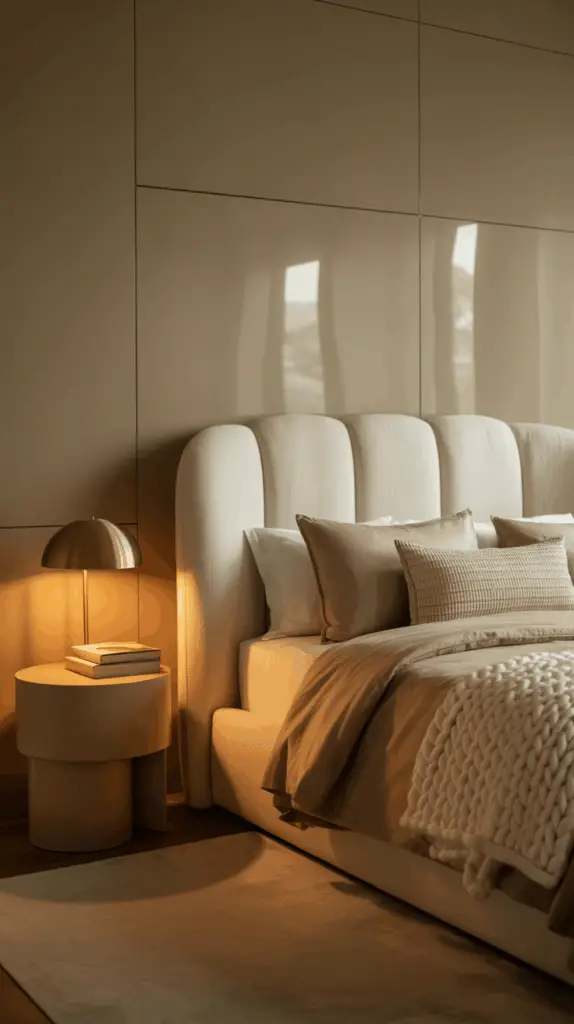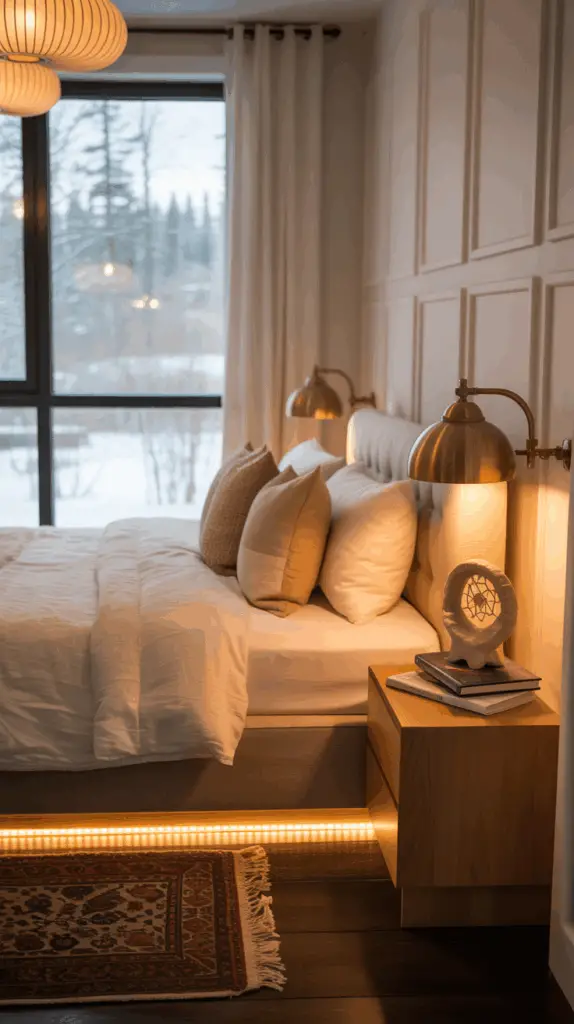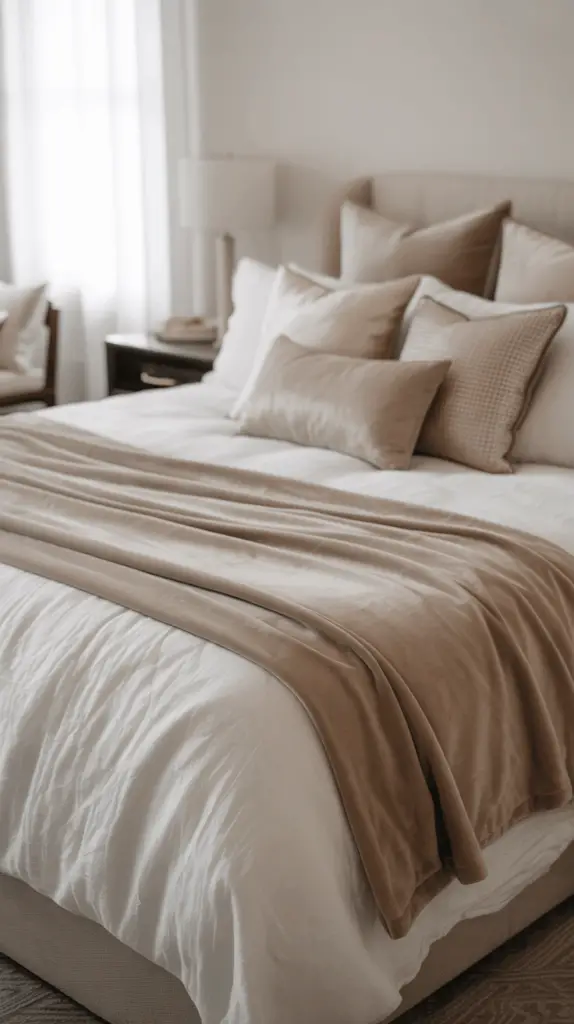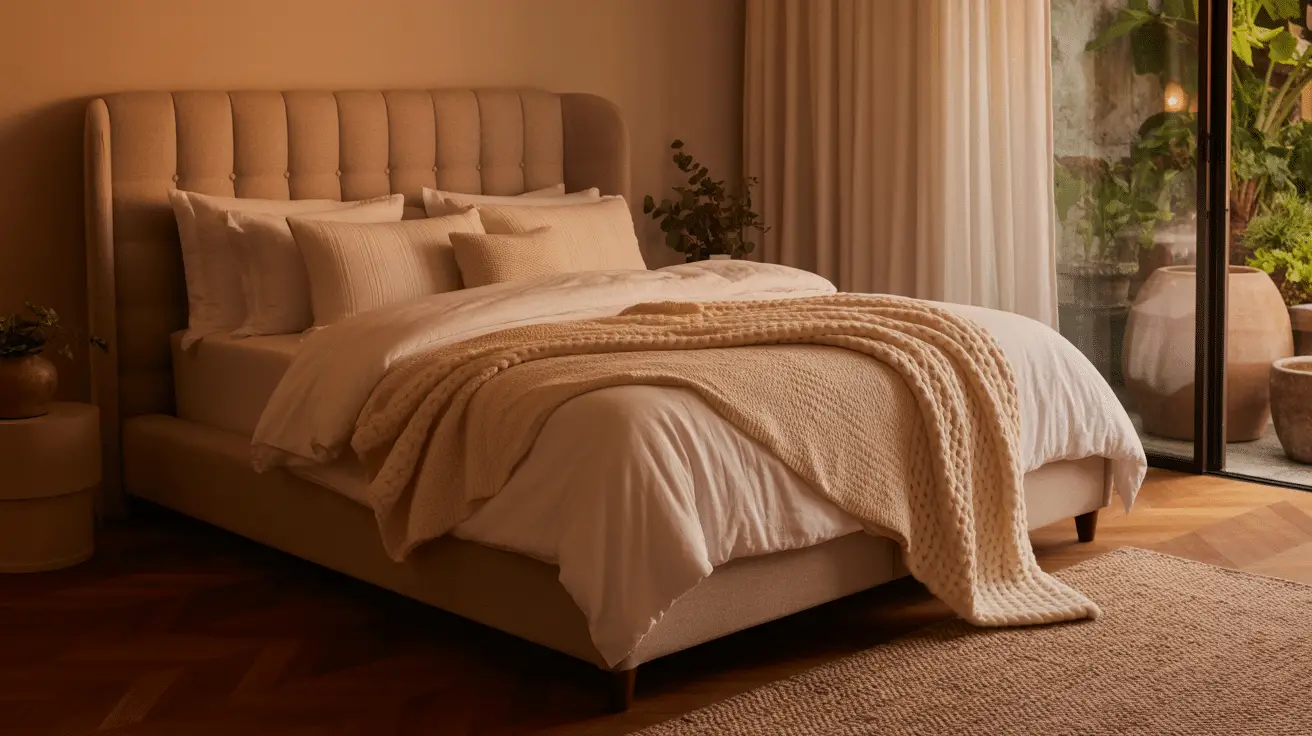12 Classy Bedroom Styling Tips Interior Designers Swear By for a Sophisticated Look
Table of Contents
Introduction
Is your bedroom stylish enough to feel like a personal sanctuary—or does it still look like an afterthought? You’re not alone. According to a 2024 survey by the National Association of Home Builders, only 41% of homeowners feel their bedroom reflects their ideal style. Yet this is the one room meant for peace, self-expression, and comfort.
A well-styled bedroom doesn’t need to be extravagant, but it does need intention. Interior designers know how to create harmony through colors, textures, furniture, and spatial flow—elements often overlooked by everyday decorators. The good news? You don’t need a full redesign or luxury budget to achieve a sophisticated bedroom vibe.
In this guide, we’re revealing 12 classy bedroom styling tips that interior designers consistently rely on to turn bland bedrooms into elevated, elegant spaces. From the perfect lighting layers to the art of choosing bedding like a pro, these tips blend practicality with style. Whether you’re updating your primary suite or upgrading a guest room, you’ll find inspiration, visuals, and step-by-step breakdowns to bring your vision to life.
Choose a Cohesive Color Palette That Sets the Mood
Color is the silent storyteller of every room. When it comes to classy bedroom styling, a well-thought-out palette is key to creating a cohesive and serene space. Interior designers lean into hues that soothe rather than stimulate—think soft neutrals, rich muted tones, and warm greys or cool blues, depending on the vibe you want.
The secret lies in choosing one base tone, one or two complementary shades, and subtle accent colors to add personality. Avoid overly bright or clashing combinations; instead, aim for harmony that flows from wall color to bedding to decor accents.
Designers often recommend testing paint samples at different times of day to see how natural and artificial lighting affect their appearance. Even a shade that looks beige in-store can turn green under LED lights at home.
Mood-Based Color Examples:
- Relaxed and airy: Ivory, linen white, pale grey, and sage green
- Warm and cozy: Clay, camel, taupe, soft terracotta
- Modern and bold: Charcoal, navy, dusty rose accents
Color Palette Planner Table:
| Palette Theme | Base Color | Secondary Colors | Accent Ideas |
| Calm Coastal | Soft grey | Seafoam, off-white | Driftwood, glass, linen |
| Sophisticated Chic | Warm taupe | Cream, gold | Velvet, brass fixtures |
| Modern Minimalist | White | Slate grey, black | Matte ceramics, eucalyptus |

Layer Lighting for Ambience and Function
Lighting can dramatically influence the mood of your bedroom. Designers never rely on one overhead light alone—instead, they layer lighting sources to create both ambiance and practicality. The trick is combining ambient, task, and accent lighting to control the room’s mood at different times of day.
Ambient light, usually from ceiling fixtures or recessed lighting, provides general illumination. Task lighting, like bedside lamps or sconces, is for reading or nighttime routines. Accent lighting—such as LED strip lighting behind a headboard or under floating shelves—adds depth and drama.
A popular designer tip: install dimmer switches. This gives you control over brightness and mood, allowing seamless transitions from day to night.
Lighting Layer Breakdown Table:
| Lighting Type | Purpose | Designer Tip | Examples |
| Ambient | General room lighting | Use dimmable LED or flush-mounts | Ceiling pendants, chandeliers |
| Task | Focused for reading/tasks | Match lamp size with nightstand scale | Bedside sconces, desk lamps |
| Accent | Adds depth and ambiance | Use warm-tone bulbs under 3000K | LED strips, uplighting |

Elevate Your Bedding Like a Boutique Hotel
Nothing transforms a bedroom faster than elevated bedding. Interior designers often treat bedding like the main event—layered, plush, and luxurious. The formula includes crisp sheets, a high-quality duvet or quilt, textured throws, and well-placed pillows.
Go for natural fabrics like cotton, linen, or bamboo for breathable comfort. Stick to 3-5 pillows: two for sleeping, two decorative shams, and one accent or bolster pillow. Avoid cluttering with too many cushions; elegance is rooted in restraint.
When layering bedding, designers use a trick called “triple-fold”: fold the duvet or coverlet back into thirds to showcase the sheets and textures underneath. This instantly makes your bed feel more curated and intentional.
Hotel-Inspired Bedding Layering Table:
| Layer | Recommended Material | Styling Tip |
| Fitted Sheet | Cotton sateen | Tuck tightly with hospital corners |
| Flat Sheet | Organic cotton | Let 3-5 inches show above duvet |
| Comforter/Duvet | Down or down-alternative | Fold back in thirds at foot of bed |
| Throw Blanket | Chunky knit or faux fur | Drape diagonally or at foot |
| Pillows | Linen, velvet, or cotton | Stick to a 2-2-1 layout (sleep, sham, accent) |

Incorporate Texture for Visual Warmth
Texture is what makes a bedroom visually rich and emotionally inviting. Designers love to layer different materials—soft linens, rough woods, smooth metals—to create a sensory experience. Without texture, even the most stylish room can feel flat.
Start with soft textures in your bedding, add a woven rug, choose a tufted headboard, and introduce natural materials like wood, rattan, or stone. Even curtains, artwork frames, and light fixtures are opportunities to add contrast.
Designers often stick to a 3-texture rule: at least three distinct tactile materials within a space to keep it dynamic. This could include a smooth side table, a boucle chair, and a jute rug.
Texture Application Table:
| Texture Element | Material Ideas | Placement Tips |
| Bedding | Linen, velvet, waffle knit | Layer textures but stick to one palette |
| Rugs | Wool, jute, shag | Choose based on foot traffic and style |
| Decor Accents | Woven baskets, ceramics | Group in odd numbers for balance |
Balance Furniture Proportions and Scale
Choosing furniture that fits your space is crucial for elegance. One of the biggest styling mistakes people make is selecting pieces that are either too bulky or too small for the room. Designers always consider scale and proportion before placing any item.
For example, a king bed in a small room can make the space feel cramped, while tiny nightstands next to a queen bed can look awkward. Use furniture that balances well with the dimensions of the room. If your room is narrow, opt for low-profile beds and floating shelves to open up the visual field.
Designers also think in layers and zones. A bedroom isn’t just a bed—it might include a reading nook, a vanity, or a bench at the foot of the bed, each thoughtfully placed for flow and function.
Furniture Balance Table:
| Room Size | Best Bed Size | Ideal Extras | Common Mistake to Avoid |
| Small (under 10×10) | Full or Queen | Slim nightstands, sconces | Oversized headboards |
| Medium (10×12–12×14) | Queen or King | Bench, rug, dresser | Crowding with too many pieces |
| Large (14×16 or more) | King or Cal King | Armchairs, vanity, larger rug | Too much empty space without zones |
Use Statement Art to Anchor the Room
Art in the bedroom is more than just decoration—it’s an emotional and stylistic anchor. Designers swear by large-scale pieces or curated groupings that reflect the personality of the room’s occupant while adding a point of visual interest.
Whether it’s a serene landscape, abstract expression, or monochrome photography, choose art that complements your palette and mood. Place it above the bed, opposite the foot of the bed, or on the largest uninterrupted wall. For a classic look, center it symmetrically; for a modern feel, try an off-centered layout with supporting decor.
Canvas prints, framed textiles, or minimalist sculptures all work well—just ensure the scale makes sense. A piece that’s too small above a king bed, for example, will look lost.
Art Placement Guide Table:
| Art Type | Ideal Location | Designer Tip |
| Oversized Canvas | Above the bed | Width should be 60–80% of bed size |
| Art Triptych | Large wall or hallway | Equal spacing, matching frames |
| Floating Shelf Display | Corner or above dresser | Mix sizes, keep color palette tight |
Conclusion
Styling a classy bedroom is an intentional process, not just a matter of buying expensive decor. It’s about creating harmony between texture, lighting, color, and functionality—principles that top designers use in every project.
Whether you’re revamping your current setup or starting fresh, these twelve tips give you a roadmap to follow. From layered lighting to texture diversity, from elegant bedding to well-proportioned furniture, each choice builds on the next to create a serene, stylish retreat.
Remember: class isn’t about perfection or price—it’s about thoughtful design choices that reflect your lifestyle and taste. Your bedroom should be a place where elegance and comfort coexist beautifully.

